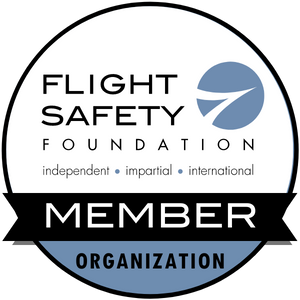Canadian aviation SMS under scrutiny — but operators have effective airline SMS solutions at the ready
Airline safety always makes for news — and it did recently in Canada: a confidential audit from the International Civil Aviation Organization (ICAO) reportedly found that the northern country scored “64 out of 100” for Canada’s implementation of critical elements of a safety oversight system.
According to the media reporting, Canada ranked below other G7 countries — except for the United Kingdom — and the majority of the 38 states in the OECD. The actual audit was not released, and so details are sparse.
Nevertheless, Canadian regulators — like their global brethren — have adopted regulations requiring air operators to implement a safety management system (SMS). This particular audit from ICAO was a country-level analysis, rather than a prognostication on individual operators in Canada. (Those same operators pushed back on the reporting, as noted in several trade media.)
Globally, software like Centrik is widely used by airlines, business jet operators, civil aviation authorities, and airports to manage their SMS — the processes and record-keeping required for a safe operation.
So, what goes into an effective SMS?
Proper internal reporting is the key component, says Jim Gautrey, an SMS subject-matter expert, and long-time consultant to airlines and aviation firms on safety management. Internal reporting is essential for identifying recurring issues. Safety reporting within an SMS is an effective way to unveil hidden risks for air operators. It allows them to assess potential risks — and ultimately mitigate them — resulting in a safer operational environment. Operators quantify the risk profile, which enables them to identify their risk factors and address them. Everything can be properly logged through software that tracks risks, incidents, and responses. But all the best aviation safety software in the world can’t mitigate for a lack of internal reporting. It’s a key element to an effective SMS, Gautrey says.
Safety assurance is an integral part of the SMS, where organizations verify the effectiveness of implemented safety measures through regular audits and compliance monitoring. This ensures that safety protocols are adhered to and that risk mitigations are functional. By connecting audit findings to risk mitigations, operators gain insights into areas that require improvement and can continuously enhance their safety practices. Leveraging data analysis is crucial to data-driven decision-making in the aviation industry. SMS data empowers aviation managers with valuable insights towards creating a safety culture.
Incidents will occur, Gautrey says. The key is how an operator responds. Safety investigations are conducted to spot issues that contributed to incidents, enabling organizations to implement corrective actions, ensuring long-term accident prevention. They provide insights into the root causes of incidents, which can then be addressed to prevent similar incidents from happening in the future.
Establishing a compliant SMS demands a step-by-step roadmap that involves setting clear safety goals and objectives, developing robust safety reporting procedures, implementing a risk management process, conducting thorough safety investigations, integrating safety assurance and compliance monitoring, and utilizing advanced SMS software, such as Centrik, to streamline data management and analysis.
This approach helps aviation organizations to create a continuous culture of safety. In conclusion, SMS data is a powerful tool to enhance safety and prevent accidents. By leveraging safety reporting, risk management, safety investigations, and safety assurance, aviation professionals gain valuable insights into their operations.
And this is just what Canadian aviation operators do, just like their global counterparts.
Let's get started
Talk to our sales team to find out how you can transform your operation with our products and services.

